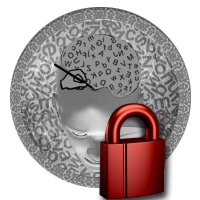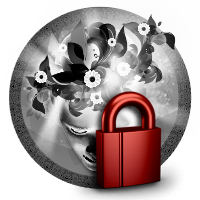
What is Vipassana Meditation ?
Vipassana means 'seeing things as they are (naturally)'. The practice of Vipassana meditation involves following the principles of Dhamma (Dharma), the universal law of nature. There are three steps to the training, which involves walking on the noble eightfold path. This is broadly categorized into Sila (Morality), Samadhi (concentration), and Panna (wisdom, insight).

First, students practice sila (Morality)- the percepts
Abstaining from actions that cause harm. Vipassana students have to undertake five moral precepts, practising abstention from killing, stealing, sexual misconduct, lying and the use of intoxicants. *The observation of these precepts 'allows the mind to calm down sufficiently to proceed further with the task at hand.'

Second- the Anapana meditation
It is practised for three and a half days in a ten-day Vipassana residential camp by focusing attention on the breath. This practice helps to develop samadhi (concentration) and gain control over the unruly mind. These first two steps of living a wholesome life and developing control of the mind are necessary and very beneficial, but they are incomplete unless the third step is taken: purifying the mind of underlying mental impurities.
The third step- the practice of Vipassana
For the six and a half days, one penetrates one's entire physical and mental structure with the clarity of panna (wisdom, insight).
Complete silence is observed for the first nine days.
The Students receive systematic meditation instructions several times a day, and each day’s progress is explained during a taped evening discourse by Mr. S. N. Goenka.
On the tenth day, students resume speaking,
Making the transition back to a more extroverted way of life. The course concludes on the morning of the eleventh day. The retreat closes with the practice of metta-bhavana (loving-kindness or goodwill towards all), a meditation technique in which the purity developed during the course is shared with all beings.
The Anapana Meditation
Anapana means observation of natural, normal respiration, as it comes in and as it goes out. This is very different from techniques that are based on the artificial regulation of breath. There are no rites or rituals involved in the practice
The benefits of Anapana techniques, as reported by studends
• Effective tool to deal with fear, anxiety, stress, tension, nervousness • Increased concentration of mind • Improved awareness and alertness of the mind • Memory becomes sharp • Decision-making power improves • Increased self-confidence • Increased capacity to work • Better ability to understand and express oneself • Mastery over the mind • Mind becomes healthy, wholesome and strong • One becomes full of good wishes for others
The Vipassana Discources Summaries- at a glance
SN Goenka's words- (Day-1) "You have started practising: awareness of respiration, nothing but respiration. It would have been easier and faster to concentrate the mind without all these discomforts if along with awareness of respiration, one had started repeating a word, a mantra, a god's name, or if one had started imagining the shape or form of a deity."
You are required to observe bare respiration, as it naturally is
Without regulating it; no word or imagined form may be added. • They are not permitted because the final aim of this meditation is not the concentration of mind. • Concentration is only a help, a step leading to a higher goal: purification of mind, eradicating all the mental defilements, the negativities within, and thus attaining liberation from all misery, attaining full enlightenment.
Every time an impurity arises in the mind, one becomes miserable.
Whenever something unwanted happens, one becomes tense and starts tying knots inside. Whenever something wanted does not happen, again one generates tension within. Throughout life, one repeats this process until the entire mental and physical structure is a bundle of Gordian knots. And one does not keep this tension limited to oneself, but instead distributes it to all with whom one comes into contact. Certainly this is not the right way to live.
The art of living- How to live peacefully& harmoniously within oneself ?
And to generate peace and harmony for all others; how to live happily from, day to day while progressing towards the highest happiness of a totally pure mind, a mind filled with disinterested love, with compassion, with joy at the success of others, with equanimity. To learn the art of living harmoniously, first one must find the cause of disharmony. The cause always lies within, and for this reason, you have to explore the reality of yourself.
Examine your own mental and physical structure towards which
There is so much attachment, resulting only in tensions, in misery. At the experiential level one must understand one's own nature, mental and physical; only then can one experience whatever there might be beyond mind and matter. This is therefore a technique of truth-realization, self-realization, investigating the reality of what one calls, oneself'. It might also be called a technique of God-realization, since after all God is nothing but the truth, but love, but purity.
The direct experience of reality is essential
"Know thyself'-from superficial, apparent, gross reality, to subtler realities, to the subtlest reality of mind and matter. Having experienced all these, one can then go further to experience the ultimate reality which is beyond mind and matter.
The technique is purely non-sectarian in nature
Respiration is a proper point from which to begin this journey. Using a self-created, imaginary object of attention word or form-will lead only in the direction of greater imaginings, greater illusion; it will not help one to discover the subtler truths about oneself. To penetrate to subtler truth, one must begin with truth, with an apparent, gross reality such as respiration. Further, if a word is used, or the form of a deity, then the technique becomes sectarian.
Every step on the path must be totally free from sectarianism.
A word or form will be identified with one culture, one religion, or another, and those of a different background may find it unacceptable. Misery is a universal malady. The remedy for this malady cannot be sectarian; it also must be universal. Awareness of respiration meets this requirement. Breath is common to all: observing it will be acceptable to all.
Breath is a tool with which to explore the truth about oneself.
You know only the external appearance of your body, the parts, and functions of it that you can consciously control. You know nothing of the internal organs which operate beyond your control, nothing of the cells of which the entire body is composed, and which are changing every moment. Innumerable biochemical and electromagnetic reactions are occurring constantly throughout the body, but you have no knowledge of them.
Whatever is unknown about yourself must become known to you.
Respiration acts as a bridge from the known to the unknown, as it is one function of the body that can be either conscious or unconscious, intentional, or automatic. One starts with conscious, intentional breathing, and proceeds to awareness of natural, normal breath. And from there you will advance to still subtler truths about yourself. Every step is a step with reality; you will penetrate further to discover subtler realities about yourself, about your body & mind.
Today you were asked to observe only the physical function of respiration
But at the same time, each one of you was observing the mind, because the nature of the breath is strongly connected to one's mental state. As soon as any impurity, any defilement arises in the mind, the breath becomes abnormal; one starts breathing a little rapidly, a little heavily. When the defilement passes away, the breath again becomes soft. Thus breath can help to explore the reality not only of the body but also of the mind.
Your mind always wandering from one object to another.
It does not want to stay on the breath or on any single object of attention: instead, it runs wild. And when it wanders, where does the mind go? By your practice, you have seen that it wanders either in the past or in the future. This is the habit pattern of the mind; it does not want to stay in the present moment. Actually, one has to live in the present. Whatever is past is gone beyond recall; whatever is future remains beyond one's reach, until it becomes present.
Living in present is very important aspect of Anapana
Remembering the past and giving thought to the future are important, but only to the extent that they help one to deal with the present. Yet because of its ingrained habit, the mind constantly tries to escape from present reality into a past or future that is unattainable, and therefore this wild mind remains agitated, miserable.
This is the art of living, life can really be lived only in the present.
The first step is to learn how to live in the present moment, by keeping the mind on a present reality: the breath that is now entering or leaving the nostrils. This is a reality of this moment, although a superficial one. When the mind wanders away, smilingly, without any tension, one accepts the fact that, because of its old habit pattern, it has wandered. As soon as one realizes that the mind has wandered, naturally, automatically, it will return to awareness of respiration.
You easily recognized the tendency of the mind
To roll in thoughts either of the past or of the future. Now of what type are these thoughts? Today you have seen for yourselves that at times thoughts arise without any sequence, any head or tail. Such mental behavior is commonly regarded as a sign of madness. Now, however, you have all discovered that you are equally mad, lost in ignorance, illusions, delusions (moha).
Even when there is a sequence to the thoughts
They have as their object something that is either pleasant or unpleasant. If it is pleasant, one starts reacting with liking, which develops into a craving, clinging (raga). If it is unpleasant, one starts reacting with disliking, which develops into aversion, hatred (dosa). The mind is constantly filled with ignorance, craving, and aversion. All other impurities stem from these three basic ones, and every impurity makes one miserable.
The goal of this technique is to purify the mind, to free it from misery
By gradually eradicating the negativities within. It is an operation deep into one's own unconscious, performed in order to uncover and remove the complexes hidden there. By observing the respiration, you have started not only to concentrate the mind but also to purify it. Perhaps today, there were only a few moments when your mind was fully concentrated on your breathing, but every such moment is very powerful in changing the habit pattern of the mind.
You are aware of the present reality,
The breath entering or leaving the nostrils, without any illusion. And you cannot crave for more breath, or feel aversion towards your breathing: you simply observe, without reacting to it. In such a moment, the mind is free from the three basic defilements, that is, it is pure. This moment of purity at the conscious level has a strong impact on the old impurities accumulated in the unconscious.
The contact of these positive & negative forces produces an explosion.
Some of the impurities hidden in the unconscious rise to the conscious level, and manifest as various mental or physical discomforts. When one faces such a situation, there is the danger of becoming agitated, and multiplying the difficulties. It would be wise to understand that what seems to be a problem is actually a sign of success in the meditation, an indication that in fact, the technique has started to work.
Nobody else can do the job for you; you have to work yourself.
The operation into the unconscious has begun & some of the pus hidden there has started to come out of the wound. Although the process is unpleasant, this is the only way to get rid of the pus, to remove the impurities. If one continues working in the proper way, all these difficulties will gradually diminish. Little by little, all the problems will pass away, if you work. You have to explore reality within yourself. You have to liberate yourself.
Make a strong determination to observe all the discipline and rules
The most important is the rule of silence. Avoid the danger of overeating, of allowing yourself to succumb to drowsiness, and of needless talking. Work exactly as you are asked to work. Without condemning it, leave aside for the course period anything that you may have read or learned elsewhere. Mixing techniques are very dangerous.
Give a free trial to the technique for the wonderful results.
Make the best use of the time, the opportunity, the technique, to liberate yourselves from the bondage of craving, aversion, delusion, and to enjoy real peace, real harmony, real happiness. Real happiness to you all. (Based on the Discourses in a ten-day Vipassana course by SN Goenka) May all beings be happy!



























